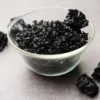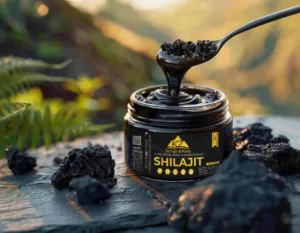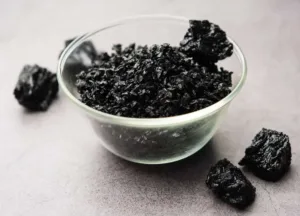Fact vs. Fiction: A Scientific Debunking of the Top 10 Myths About Shilajit
Shilajit, a revered substance in Ayurvedic medicine for centuries, has surged in global popularity as a potent dietary supplement. However, with increased attention comes widespread misinformation. This complex mineral-resin is often misunderstood, leading to a landscape filled with exaggerated claims and unfounded fears.
For consumers and health professionals seeking clarity, this article provides a critical analysis of the most prevalent myths about Shilajit, distinguishing evidence-based benefits from popular fiction.
Myth 1: Shilajit is Exclusively a Male Supplement
The Fiction: Shilajit is often marketed primarily as a “male vitality” or “testosterone booster,” creating the impression that its benefits are gender-specific.
The Fact: While clinical studies have demonstrated Shilajit’s efficacy in supporting male reproductive health—such as increasing sperm count and motility—its benefits are not gender-restricted. Shilajit is a potent adaptogen, meaning it helps the body resist physiological and psychological stress. Its rich fulvic acid and mineral content support cellular energy production (mitochondrial function), cognitive health, and antioxidant activity, which are universally beneficial regardless of gender.
Myth 2: Shilajit is “Nature’s Viagra”
The Fiction: A common marketing claim positions Shilajit as a direct, immediate-acting substitute for pharmaceutical erectile dysfunction medications.
The Fact: This is a misrepresentation of its mechanism. Shilajit is not a rapid-onset vasodilator like sildenafil (Viagra). Instead, research suggests it supports sexual health through foundational improvements. It may enhance nitric oxide production, which supports blood flow, and combat fatigue and stress, which are common underlying factors in low libido. Its effects are cumulative and systemic, not an instantaneous solution.
Myth 3: Shilajit is a Magical Cure-All
The Fiction: Some sources attribute near-miraculous, panacea-like properties to Shilajit, claiming it can cure everything from chronic diseases to severe disorders on its own.
The Fact: Shilajit is a powerful supplement, not a magic bullet. Its value lies in its role as a foundational support. Scientific evidence points to its potential as a complementary therapy for supporting energy levels, cognitive function, and mineral supplementation. It should be viewed as part of a holistic health strategy that includes nutrition, exercise, and proper medical care, not a replacement for it.
Myth 4: Shilajit is Unsafe to Consume During Summer Months
The Fiction: An old Ayurvedic belief suggests that Shilajit, being “heating” to the body, should be avoided in hot weather to prevent imbalance.
The Fact: Modern usage and clinical studies do not support seasonal avoidance for healthy individuals. The key factors for safe consumption are dosage, purity, and individual constitution. While those with a specific “Pitta” constitution in Ayurveda may monitor their body’s response, there is no scientific basis for the general population to discontinue use in summer. Staying hydrated is always advisable.
Myth 5: Shilajit Should Not Be Taken Daily
The Fiction: A circulating myth advises cycling Shilajit or taking it only occasionally to prevent the body from becoming “dependent” or “accustomed” to it.
The Fact: Consistency is key with adaptogenic supplements. The documented benefits in clinical trials—which often last from 8 to 12 weeks—are based on daily, consistent intake. Shilajit’s compounds work to support the body’s systems over time. There is no evidence of dependency or tolerance development associated with its responsible use.
Myth 6: All Shilajit Products Are Created Equal
The Fiction: Consumers often assume that any product labeled “Shilajit” offers the same composition and benefits.
The Fact: This is one of the most critical misconceptions. Shilajit quality varies dramatically based on:
- Geographical Source: Himalayan, Altai, and Peruvian Shilajit have different mineral profiles.
- Purity: Raw, unprocessed Shilajit can contain heavy metals, mycotoxins, and other contaminants. Purification is essential for safety.
- Fulvic Acid Content: High-quality, purified Shilajit is standardized to contain a significant percentage (often 60%+) of fulvic acid, a primary active component.
Myth 7: Shilajit is a Steroid or Hormone
The Fiction: Due to its association with vitality and strength, some mistakenly classify Shilajit as an anabolic steroid or a direct hormone.
The Fact: Shilajit is a complex organic-mineral substance. It contains no steroid hormones. Research indicates it may support the body’s natural endocrine function. For instance, a study published in the Journal of Ethnopharmacology found that it helped maintain healthy testosterone levels by supporting mitochondrial function in the testes, not by introducing external hormones.
Myth 8: Its Primary Function is a Testosterone Booster
The Fiction: This myth reduces Shilajit’s multifaceted nature to a single, narrow function.
The Fact: While supporting hormonal health is one potential benefit, it is far from the only one. Robust research highlights its diverse applications:
- Cognitive Health: Fulvic acid in Shilajit may help inhibit tau protein aggregation, a factor in neurodegenerative diseases.
- Energy Metabolism: It enhances mitochondrial ATP production, directly supporting cellular energy.
- Anti-inflammatory & Antioxidant: Its bioactive compounds combat oxidative stress and inflammation.
Myth 9: Shilajit is Safe for Children and the Elderly Without Consultation
The Fiction: As a “natural” product, it is assumed to be universally safe for all demographics.
The Fact: Prudence is necessary. There is a lack of clinical safety data on Shilajit for pregnant or breastfeeding women, children, and individuals with severe chronic illnesses like kidney disease or certain genetic disorders. These populations should only use Shilajit under the guidance of a qualified healthcare professional.
Myth 10: Shilajit Causes Constipation
The Fiction: Anecdotal reports sometimes link Shilajit consumption to digestive slowdown.
The Fact: This is not a typical or documented side effect of pure, purified Shilajit. In fact, traditional use often cites its digestive benefits. If constipation occurs, it could be due to dehydration, an impure product containing fillers, or an individual’s unique reaction to the resin. Proper hydration is crucial when taking any concentrated supplement.
Navigating the Shilajit Market: A Guide to Informed Choices
Given the prevalence of Myth #6, consumers must be diligent. To ensure safety and efficacy:
- Verify Purity: Only purchase from reputable brands that provide a Certificate of Analysis (CoA) from a third-party laboratory. This certifies the product is free from heavy metals, microbes, and other contaminants.
- Seek Standardization: Opt for products that specify their fulvic acid content and use a purified, standardized extract (e.g., PrimaVie®).
- Consult a Professional: Before introducing any new supplement, discuss it with your healthcare provider, especially if you have pre-existing conditions or are taking medication.
Conclusion: Empowering Informed Decisions
Demystifying Shilajit is essential for appreciating its true value as a dietary supplement. By moving beyond the myths and grounding our understanding in scientific evidence and quality standards, we can harness its potential safely and effectively. Shilajit is not a mythical panacea but a substantively researched adaptogen that offers profound systemic support when sourced and consumed responsibly.





Add comment